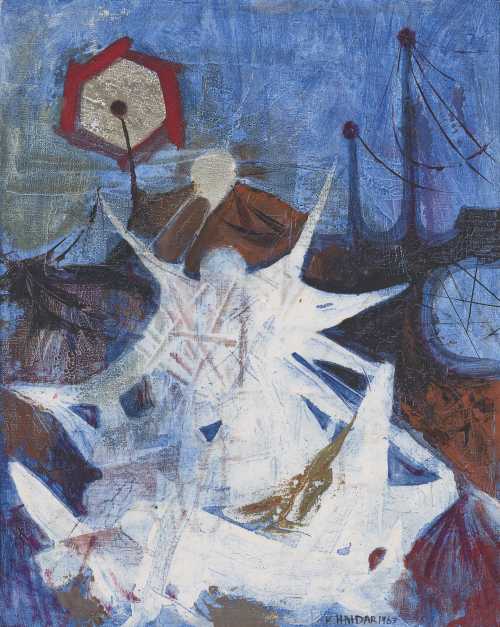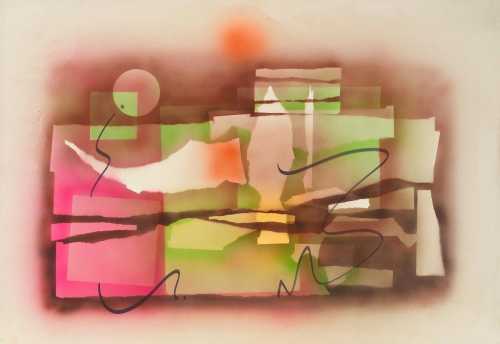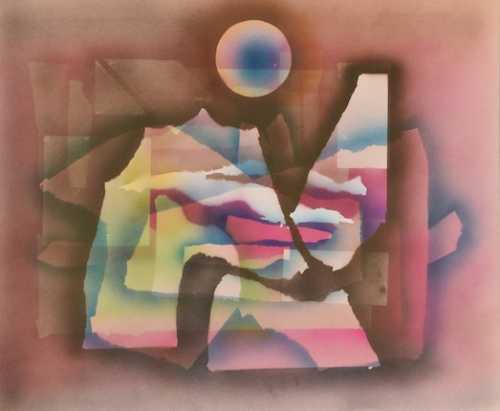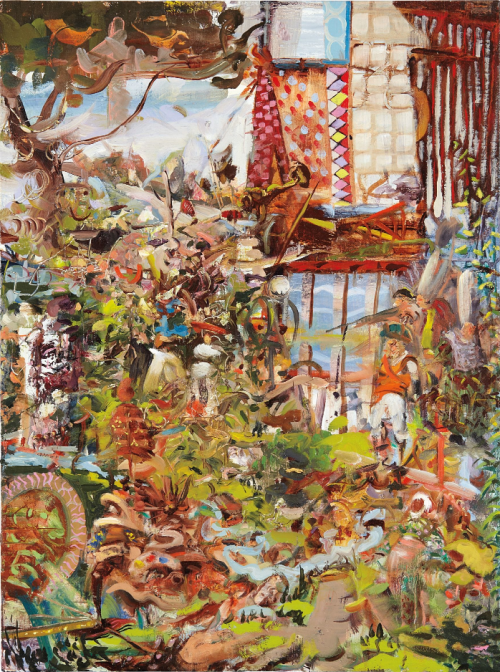- He is destroyed that he may then return (from 'The Martyr's Epic' series) 1963
- Oil on canvas
- Painting
- 40.6 * 50.8 cm
- signed and dated 'K.HAIDAR 1963' (lower right);
20 October 2021
Estimation
£40,000
55,264 USD
-
£60,000
82,896 USD
Realized Price
£118,750
164,065 USD
137.5%
Artwork Description
Text by Dr Ahmed Naji, independent researcher and cultural advisor on art in Iraq and the Arab world
“He is destroyed that he may then return” is the fourth painting from a historically acclaimed exhibition titled The Martyr’s Epic by Kadhim Haider which was held during 20-29 April, 1965 at the National Museum of Modern Art in Baghdad, also known as the Gulbenkian Building after its funders, The Calouste Gulbenkian Foundation. This exhibition is widely considered as a defining moment in Iraqi art history as well as the first contemporary art exhibition after three decades of Iraqi modernism which was established in the preceding decades by Faeq Hassan, Jewad Selim and Hafidh Al-Droubi.
Haider’s exhibition contained 35 artworks - their titles included in the exhibition catalogue in the form of a free verse poem composed by Haidar in Arabic and translated into English by Jabra I. Jabra. The title of the exhibition also doubles up as the title of the poem, The Martyr’s Epic, in reference to the annual Ashura mourning processions held in Iraq and elsewhere, which commemorate the martyrdom of al-Husayn bin Ali and other members of the Prophet's family in 680 AD on the plains of Karbala, Iraq. The Ashura processions are based on oral traditions of narration and poetry accompanied by a full costume sombre pageant to recount the 3-day events of the besieging of al-Husayn’s camp and his martyrdom along with 63 of his companions and family members against a large Umayyad army.
Haider’s paintings and the poem in the exhibition catalogue succeeded in “reproducing the coupling of pageant and poetry in the mourning processions”, according to Saleem Al-Bahloly. At the same time, Haider’s appropriation of tradition (Turath) surpassed both Jewad Selim’s and Shakir Hassan al-Said’s own appropriation of Iraqi cultural heritage which was the ethos of Selim’s and al-Said’s highly influential Baghdad Modern Art Group founded a decade earlier. While Selim and al-Said succeeded in forging modern forms of their heritage through the modernism lens, Haider successfully managed to elevate the oral tradition and folk art into contemporary art emphasising the values of martyrdom and making them ever more accessible. Haider brilliantly channelled the human condition whereby an individual is prosecuted and killed because of his/her own beliefs, ideals or political stance.
The 35 paintings of The Martyr’s Epic are not widely available in historical sources, with the best-known examples contained in important museums and collections such as Qatar’s Mathaf Arab Museum of Modern Art, Barjeel Art Foundation in Sharjah and Dalloul Art Foundation in Beirut. The known artworks feature symbolic horses and warriors in reference to the pageant and oral traditions. However, this painting in contrast stands out as an abstract composition depicting the ascension of the martyr’s soul and ideals against the grim reality of the conflict. There exists only one other known artwork from the same exhibition which also presents a similar subject matter of the martyr’s metaphysical presence as a pure abstract composition titled ‘Will the horseman return one day’ (no. 33 in the exhibition catalogue).
This painting from the Parker Collection draws on Haider’s expertise in theatre design which he pioneered in Iraq after completing his studies at the Central College of the Arts (now Central St. Martins), London, in 1962. The martyred knight’s spirit takes a dynamic vanishing-appearing form emerging from a body on a bloodied ground to ascend towards a radiating sun in a shattered sky. The stage-design quality in this painting demonstrates Haidar’s ability, both technically and conceptually, in constructing a contemporary scene from traditional elements such as the remnants of shattered tents, poles and ropes. The poles in the background also symbolise the spears which carried the severed heads of the martyrs paraded by the Umayyad army from Karbala to Damascus. One of the poles on the right side of the painting carries what could be the severed head of al-Husayn glowing with a halo of light and blood.
Kadhim Haider later presented the theme of martyrdom to a wider Arab audience by referencing the Palestinian struggle in later years. Towards the end of the 1970s and early 1980s, Haider focused on abstract forms in paintings and lithographs, many of which have their founding elements in this particular painting from the Parker Collection. Thus, this painting serves as a unique case study in Haider’s abstraction practice which he further explored towards the last few years of his life to express his struggle with leukemia and his subsequent early death in 1985.
Kadhim Haider was born in 1932, Baghdad. He studied literature at the Higher Institute of Teachers in Baghdad and enrolled in evening studies at the Institute of Fine Arts during the same period, completing both courses in 1957. He then studied theatre design, painting and lithography at the Central College of the Arts (now Central St. Martins), in London from 1959 to 1962. During his London years, he explored the contemporary art scene particularly focusing on Francis Bacon, as well as connecting with another Iraqi scholar studying theatre in London, Sami Abdul Hameed. Upon their return to Iraq, both Abdul Hameed and Haider pioneered Iraqi theatre producing several landmark plays such as the Merchant of Venice (1965) and the Epic of Gilgamesh (1977).
Dr Ahmed Naji is the author of Under the Palm Trees: Modern Iraqi Art with Mohamed Makiya and Jewad Selim, Rizzoli New York, 2019. (Instagram: Ahmednaji_Al Said)
“He is destroyed that he may then return” is the fourth painting from a historically acclaimed exhibition titled The Martyr’s Epic by Kadhim Haider which was held during 20-29 April, 1965 at the National Museum of Modern Art in Baghdad, also known as the Gulbenkian Building after its funders, The Calouste Gulbenkian Foundation. This exhibition is widely considered as a defining moment in Iraqi art history as well as the first contemporary art exhibition after three decades of Iraqi modernism which was established in the preceding decades by Faeq Hassan, Jewad Selim and Hafidh Al-Droubi.
Haider’s exhibition contained 35 artworks - their titles included in the exhibition catalogue in the form of a free verse poem composed by Haidar in Arabic and translated into English by Jabra I. Jabra. The title of the exhibition also doubles up as the title of the poem, The Martyr’s Epic, in reference to the annual Ashura mourning processions held in Iraq and elsewhere, which commemorate the martyrdom of al-Husayn bin Ali and other members of the Prophet's family in 680 AD on the plains of Karbala, Iraq. The Ashura processions are based on oral traditions of narration and poetry accompanied by a full costume sombre pageant to recount the 3-day events of the besieging of al-Husayn’s camp and his martyrdom along with 63 of his companions and family members against a large Umayyad army.
Haider’s paintings and the poem in the exhibition catalogue succeeded in “reproducing the coupling of pageant and poetry in the mourning processions”, according to Saleem Al-Bahloly. At the same time, Haider’s appropriation of tradition (Turath) surpassed both Jewad Selim’s and Shakir Hassan al-Said’s own appropriation of Iraqi cultural heritage which was the ethos of Selim’s and al-Said’s highly influential Baghdad Modern Art Group founded a decade earlier. While Selim and al-Said succeeded in forging modern forms of their heritage through the modernism lens, Haider successfully managed to elevate the oral tradition and folk art into contemporary art emphasising the values of martyrdom and making them ever more accessible. Haider brilliantly channelled the human condition whereby an individual is prosecuted and killed because of his/her own beliefs, ideals or political stance.
The 35 paintings of The Martyr’s Epic are not widely available in historical sources, with the best-known examples contained in important museums and collections such as Qatar’s Mathaf Arab Museum of Modern Art, Barjeel Art Foundation in Sharjah and Dalloul Art Foundation in Beirut. The known artworks feature symbolic horses and warriors in reference to the pageant and oral traditions. However, this painting in contrast stands out as an abstract composition depicting the ascension of the martyr’s soul and ideals against the grim reality of the conflict. There exists only one other known artwork from the same exhibition which also presents a similar subject matter of the martyr’s metaphysical presence as a pure abstract composition titled ‘Will the horseman return one day’ (no. 33 in the exhibition catalogue).
This painting from the Parker Collection draws on Haider’s expertise in theatre design which he pioneered in Iraq after completing his studies at the Central College of the Arts (now Central St. Martins), London, in 1962. The martyred knight’s spirit takes a dynamic vanishing-appearing form emerging from a body on a bloodied ground to ascend towards a radiating sun in a shattered sky. The stage-design quality in this painting demonstrates Haidar’s ability, both technically and conceptually, in constructing a contemporary scene from traditional elements such as the remnants of shattered tents, poles and ropes. The poles in the background also symbolise the spears which carried the severed heads of the martyrs paraded by the Umayyad army from Karbala to Damascus. One of the poles on the right side of the painting carries what could be the severed head of al-Husayn glowing with a halo of light and blood.
Kadhim Haider later presented the theme of martyrdom to a wider Arab audience by referencing the Palestinian struggle in later years. Towards the end of the 1970s and early 1980s, Haider focused on abstract forms in paintings and lithographs, many of which have their founding elements in this particular painting from the Parker Collection. Thus, this painting serves as a unique case study in Haider’s abstraction practice which he further explored towards the last few years of his life to express his struggle with leukemia and his subsequent early death in 1985.
Kadhim Haider was born in 1932, Baghdad. He studied literature at the Higher Institute of Teachers in Baghdad and enrolled in evening studies at the Institute of Fine Arts during the same period, completing both courses in 1957. He then studied theatre design, painting and lithography at the Central College of the Arts (now Central St. Martins), in London from 1959 to 1962. During his London years, he explored the contemporary art scene particularly focusing on Francis Bacon, as well as connecting with another Iraqi scholar studying theatre in London, Sami Abdul Hameed. Upon their return to Iraq, both Abdul Hameed and Haider pioneered Iraqi theatre producing several landmark plays such as the Merchant of Venice (1965) and the Epic of Gilgamesh (1977).
Dr Ahmed Naji is the author of Under the Palm Trees: Modern Iraqi Art with Mohamed Makiya and Jewad Selim, Rizzoli New York, 2019. (Instagram: Ahmednaji_Al Said)
More lots by Kadhim Hayder
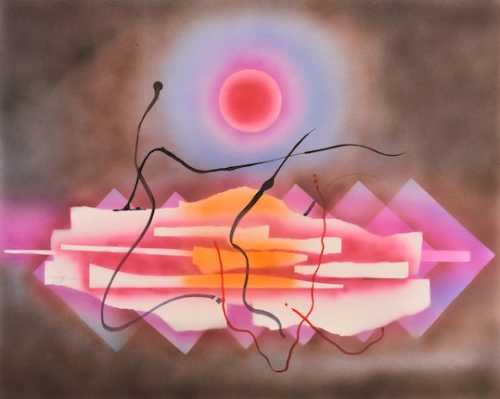
Bleeding Moon
Estimation
£16,000
19,898 USD
-
£25,000
31,091 USD
Realized Price
£20,480
25,469 USD
0.098%
Sale Date
Bonhams
-
24 May 2023
Realized Price
269,538 USD
Min Estimate
66,896 USD
Max Estimate
96,485 USD
Average Artwork Worth
+142.441%
Average Growth of Artwork Worth
Sales Performance Against Estimates
Average & Median Sold Lot Value
2019 - 2023
Performance vs. Estimate
2019 - 2023
Sell-through Rate
2019 - 2023
Similar Artworks

Untitled
Estimation
£30,000
39,474 USD
-
£40,000
52,632 USD
Realized Price
£95,250
125,329 USD
172.143%
Sale Date
Christie's
-
6 November 2025
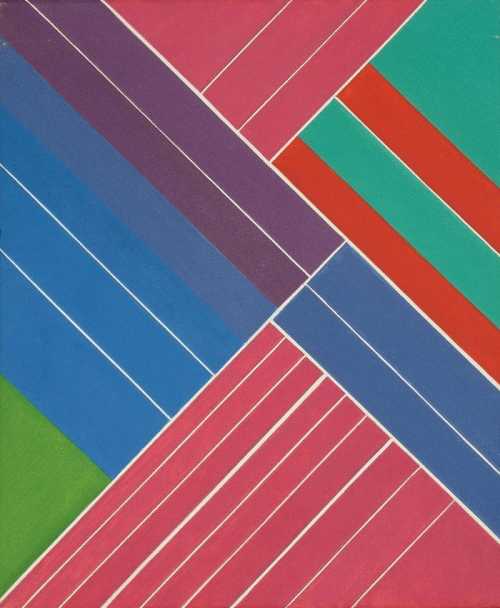
CACO3 + H2O
Estimation
£30,000
38,885 USD
-
£50,000
64,809 USD
Realized Price
£108,350
140,441 USD
170.875%
Sale Date
Bonhams
-
13 November 2024
